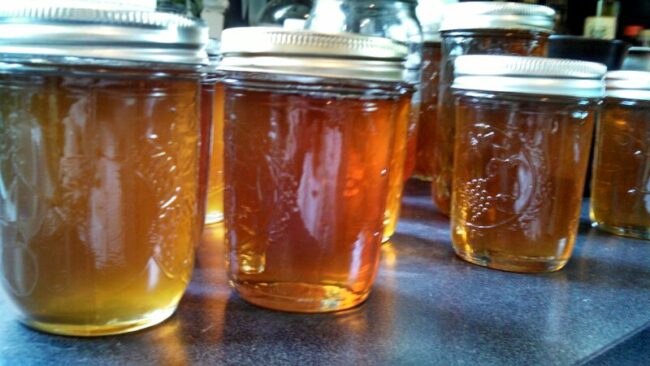Headlines
American Honey With a Side of Nuclear Fallout [Video]

Sometimes referred to as liquid gold or food of the gods, honey’s uses go beyond sweetening food. Honey has been used as both food and medicine for thousands of years in many cultures worldwide. A study posted in the journal Nature Communications in March 2021, honey from several regions of the United States shows traces of the radioactive isotope cesium-137, a byproduct of nuclear fission, left behind by nuclear testing that took place in the 1950s and 60s.
According to the study, 68 of 122 fresh honey samples from across the eastern United States from Maine to Florida show differing amounts of cesium-137. Some of the bombs that were detonated on American soil include Nevada and New Mexico. Many bombs were also detonated in the South Pacific on the Marshall Islands and Russia’s Novaya Zemlya Arctic Archipelagos.
When the bombs were detonated, enormous quantities of radioactive particles were dispersed into the atmosphere. The cesium was brought eastward by prevailing winds and is still in motion in plants and animals some 50 years later. Concentrations of the radioactive isotope found in some honey test samples were around 100 times higher than those seen in other foods.
The most radioactive honey came from Florida and contained 19.1 becquerels — a unit used to measure radioactivity per kilogram. Anything above 1,2oo is not safe for food consumption.
![American Honey With a Side of Nuclear Fallout [Video] Honey](https://i0.wp.com/guardianlv.com/wp-content/uploads/2021/04/rsz_16580218256_4762756657_c-450x300.jpg?resize=450%2C300&ssl=1)
Geochemist Jim Kaste, the lead author of the study, said that the levels of cesium-137 are not high enough to pose a threat to human health, meaning the honey remains “safe for consumption.”
Cesium is an element that is similar to potassium. Potassium is essential to plants. When plants do not have enough potassium, they have weak stems, roots are not formed well, and the edges of leaves on older plants appear burned. Potassium deficiency also results in the plants not having enough energy to grow or efficiently regulate water use properly.
Since the cesium element is similar to that of potassium, plants grown in potassium-depleted soils will absorb the cesium as it appears to the plants to be most similar. The plants then pass the radioactive isotope to the bees via the plant’s nectar.
All across the country, colony collapse disorder (CCD) has been a major blow to honey production. It occurs when most worker bees from a colony disappear and leave behind a queen. They also leave behind food and some nurse bees to care for the baby bees left behind. Kaste says the study doesn’t allow us to “say for sure if cesium-137 has anything to do with bee colony collapse or the decline of the population.”
According to a survey from researchers at the University of Maryland, from April 2019 to April 2020, beekeepers across the United States lost 43.7 percent of their honey bees. It was the second-highest rate of bee population decline since the survey began in 2006. Bees are “getting wiped out from pesticides, but there are other lesser-known toxic impacts from humans, like fallout, that can affect their survival,” biogeochemist Justin Richardson who works at the University of Massachusetts.
Written by Ebonee Stevenson
Sources:
Smithsonian Magazine: Fallout From Cold War Nuclear Testing Detected in U.S. Honey; by Alex Fox
Popular Mechanics: American Honey Still Contains Nuclear Fallout From the 1950s; by Caroline Delbert
Gizmodo: A Record Number of Bees Died Last Summer; by Dharna Noor
Featured and Top Image Courtesy of Jason Riedy’s Flickr Page – Creative Commons License
Inset Image Courtesy of Neil Tackaberry’s Flickr Page – Creative Commons License
